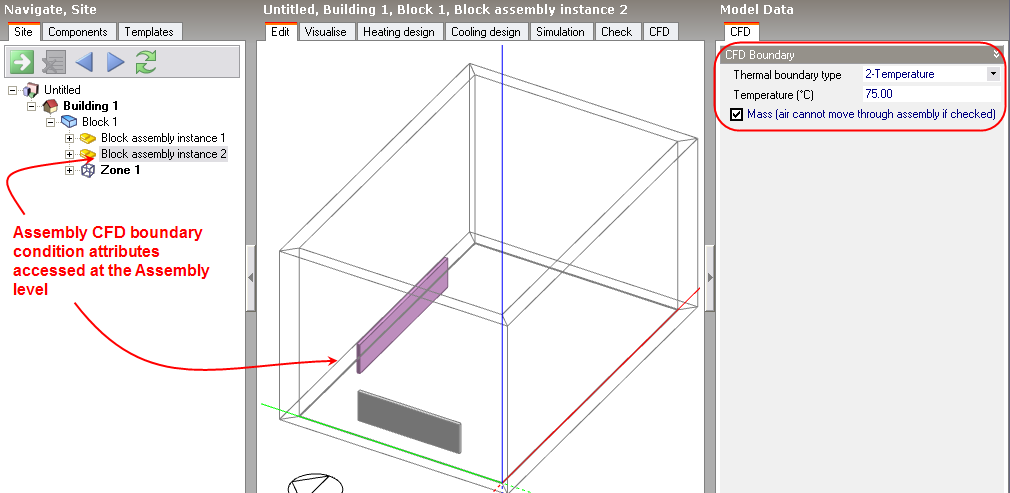
Component blocks and assemblies can be used for CFD analyses to simply allow for the effect of obstructions on the airflow. However, they also allow the definition of CFD boundary attributes to enable them to act as constant temperature surfaces or heat flux sources and can also be modified to behave as non-solids to allow air to pass through them.
Note: in current versions of the software, component blocks and assemblies defined at block level do not affect EnergyPlus simulations
CFD attributes for component blocks are inherited down from the building level to component blocks located at both building and building block levels. CFD attributes for component blocks are accessed on the CFD model data tab.
The CFD assembly library that is provided with DesignBuilder contains a number of pre-defined assemblies that can be used to add items such as occupants, radiators and furniture. Some of these pre-defined assemblies already have CFD boundary attributes associated with them, e.g. occupant assemblies have a defined convective heat flux of 45W. You can also define your own assemblies for use in CFD analyses and you will find details of how to do this in the ‘Assemblies’ Help section.
CFD attributes for component assemblies are inherited from the parent assembly to instances of the assembly at the building and building block levels. CFD attributes for assemblies are accessed from the CFD tab after moving down to an assembly instance level by clicking on it in the navigator or double-clicking on it in the Edit screen. It is important to understand that if you change an attribute for a specific instance of an assembly, the attributes will be changed for all other instances of the same assembly.

The following CFD boundary settings are available for both component blocks and component assemblies:
Thermal boundary type: The thermal boundary type can be set to one of the following:
If the thermal boundary type has been set to Temperature, enter the temperature of the block.
If the thermal boundary type has been set to Flux, enter the convectiveonly portion of the heat emission of the block. If you know the total heat flux then you can calculate the convective part by multiplying by (1-radiant fraction). For modelling building occupants you can assume a radiant fraction of 0.5. You can search the DesignBuilder help using "radiant fraction" as the search term to find more example radiant fractions for different types of equipment.
Determines whether or not the block will act as a physical obstruction to the surrounding flow. In some cases, it may be desirable to fix the temperature or flux of the component but allow air to pass through the block, e.g. to represent an occupancy flux throughout a large volume without needing to locate individual occupants.